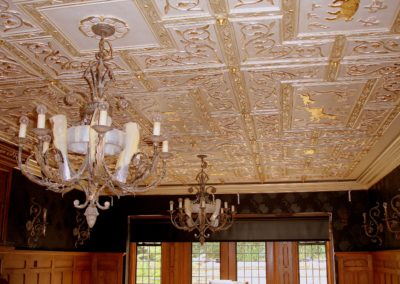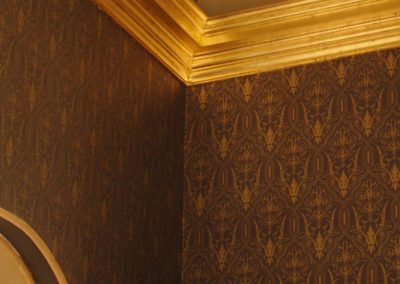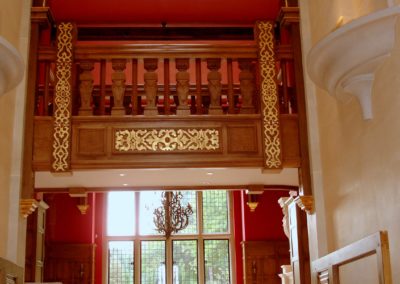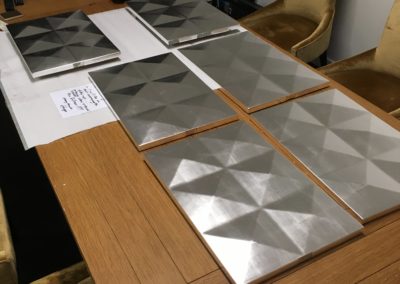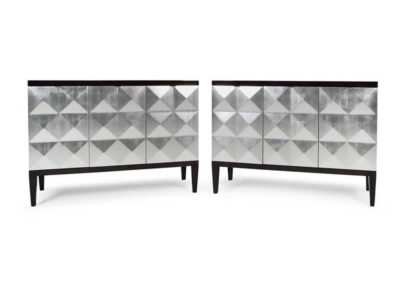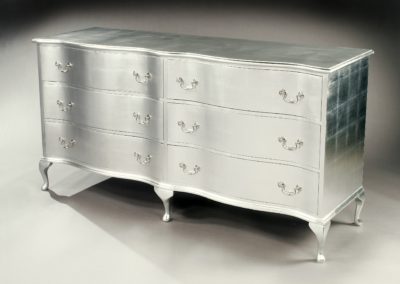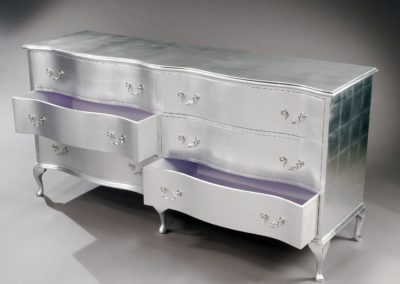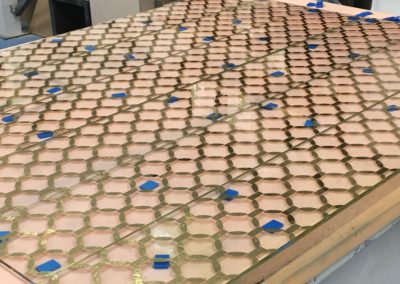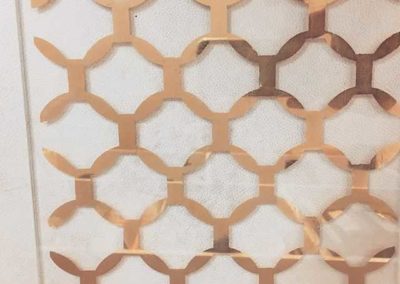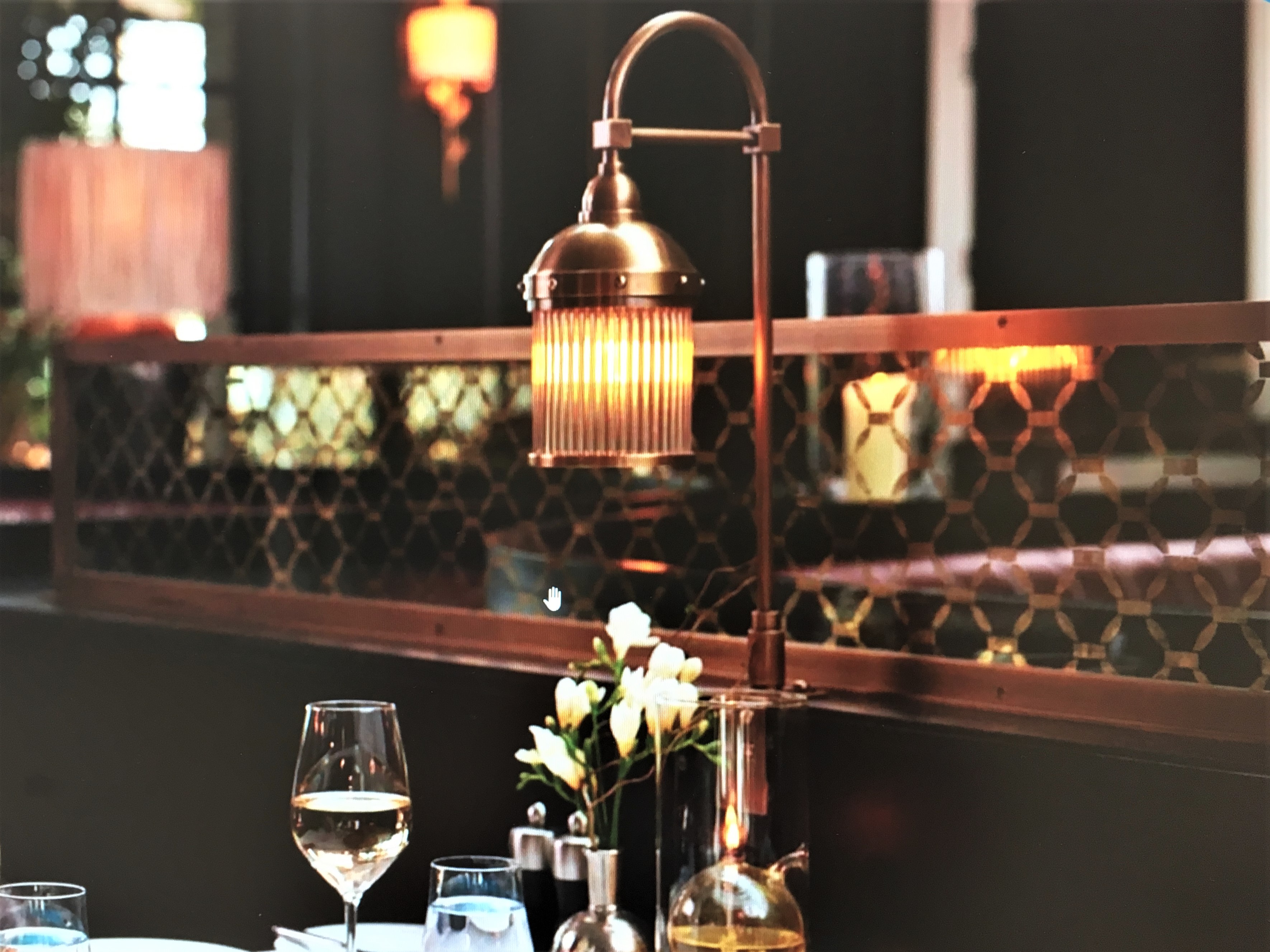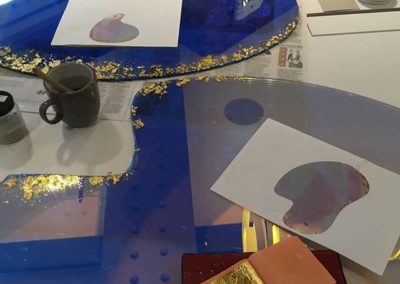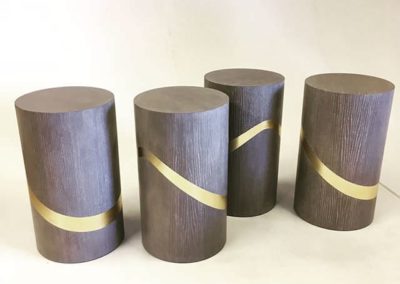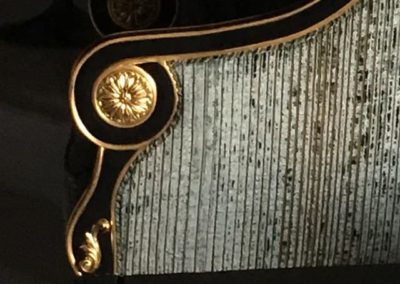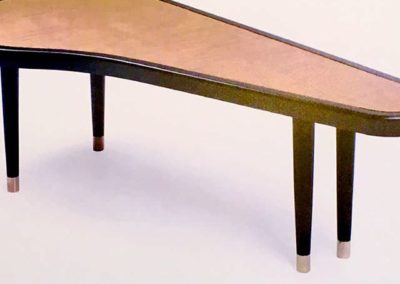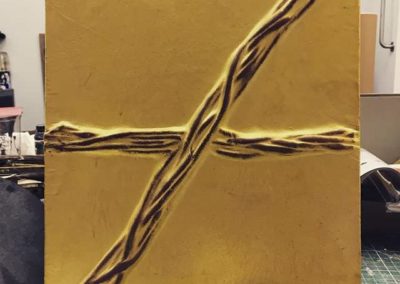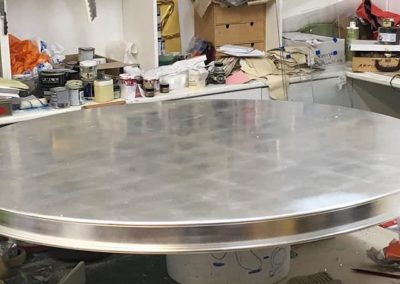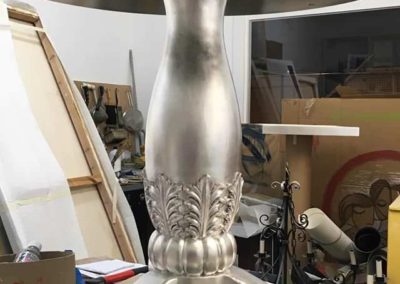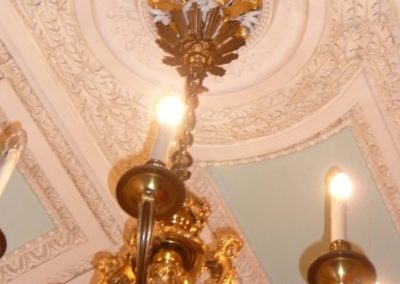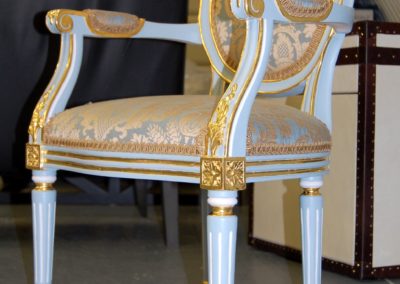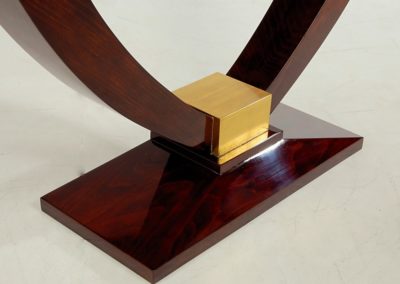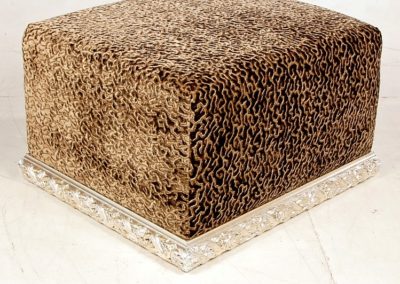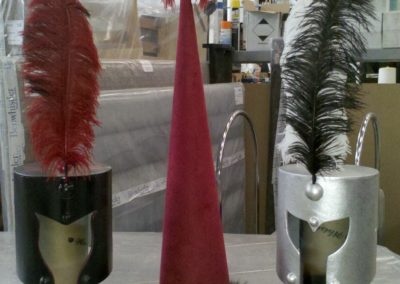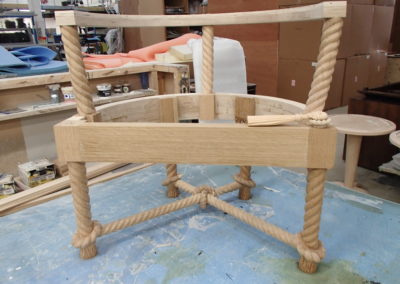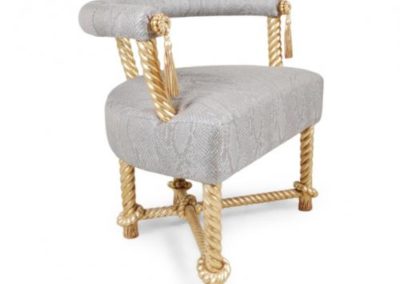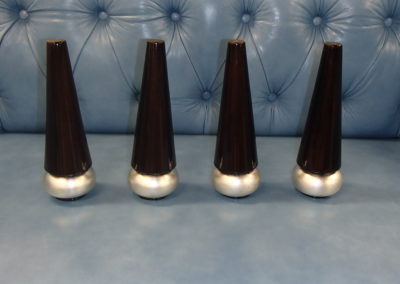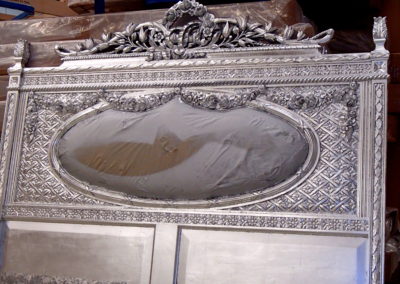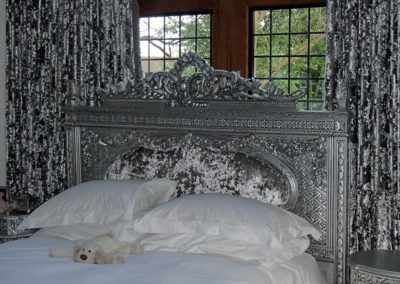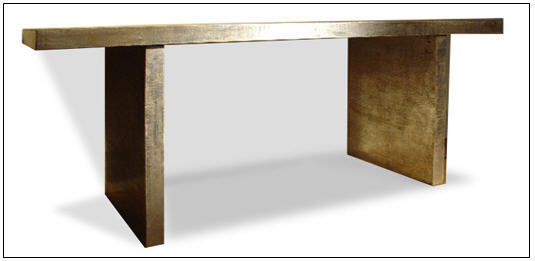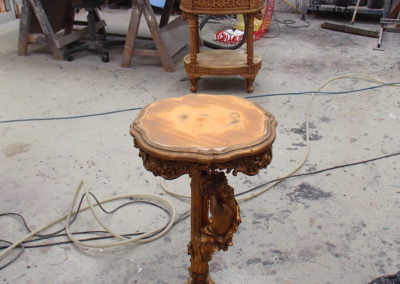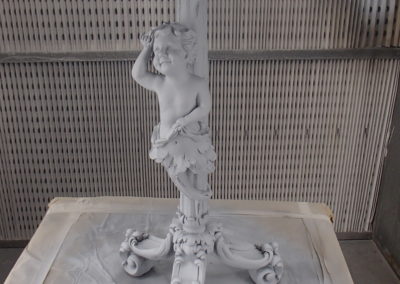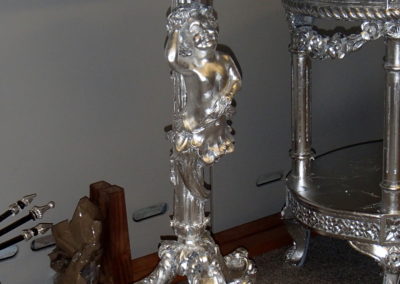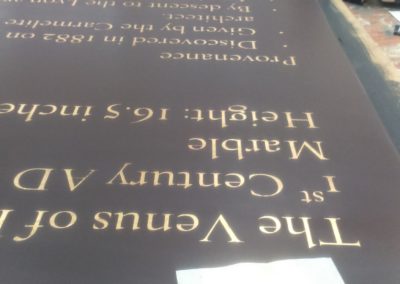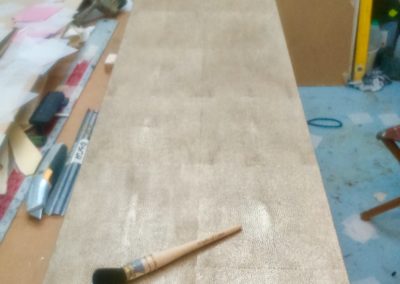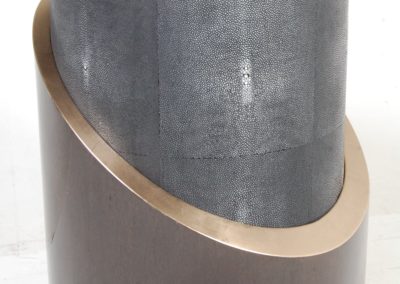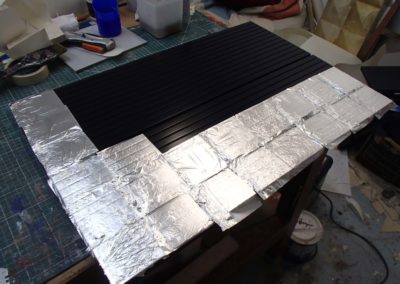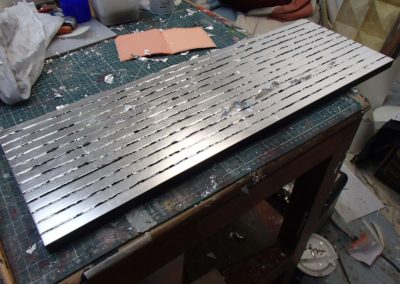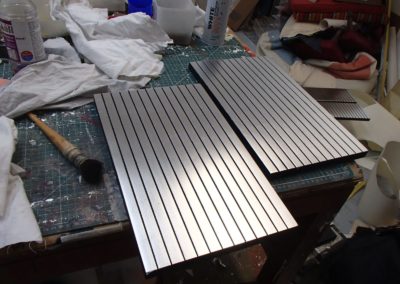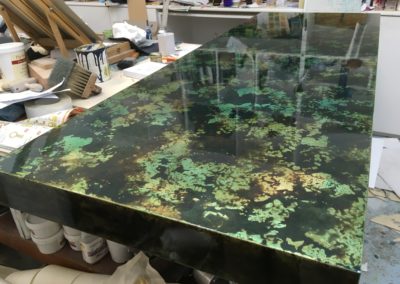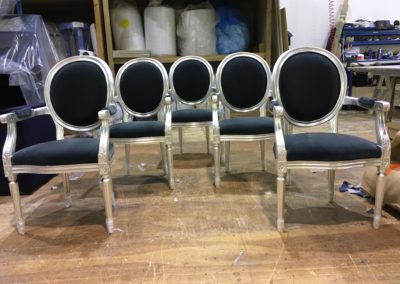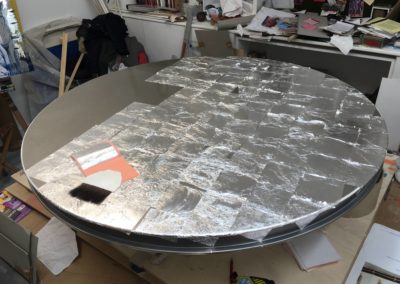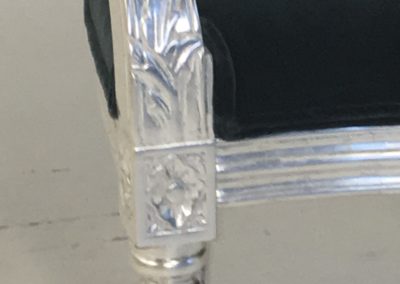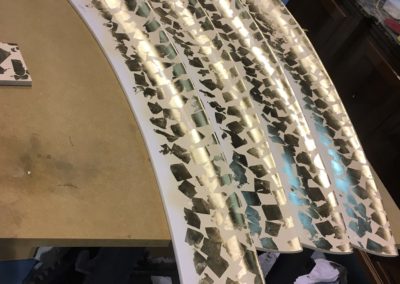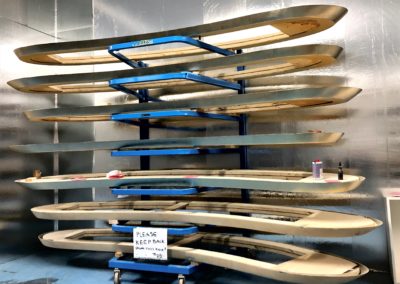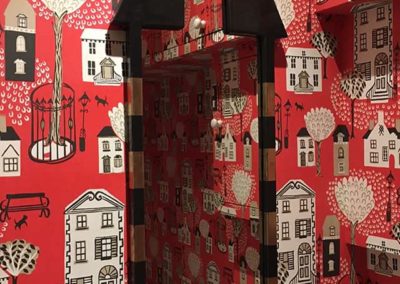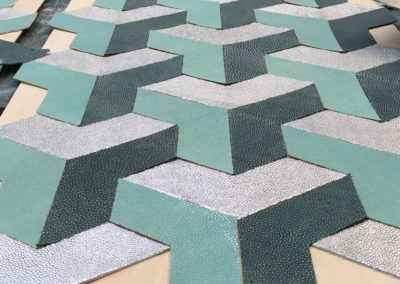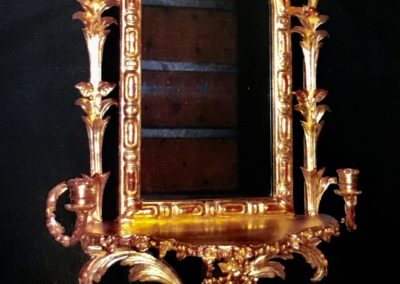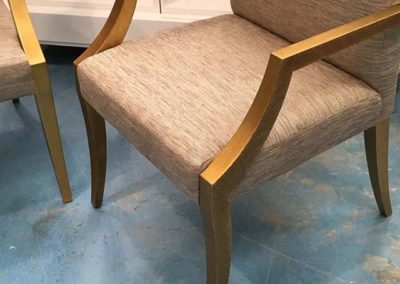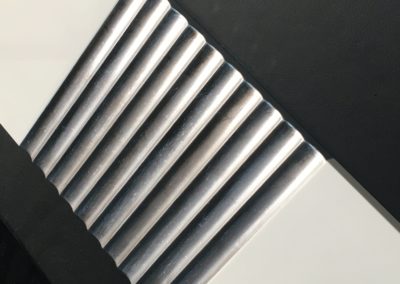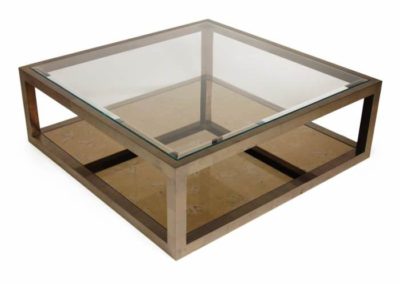Gilding
We gild using both traditional methods, namely Water Gilding and Oil Gilding. The oil method is very resilient and is used for objects with high traffic, and external architectural gilding. Water gilding is the method as perfected thousands of years ago by the ancient Egyptians. It involves coating the substrate, usually wood, in layers of gesso, followed by even more layers of bole, (yellow, or black Armenian clay) which is then polished to a glass-like finish.
The gold leaf is then floated onto this surface when moistened and the surface tension of the water draws the leaf tightly onto the surface as it dries. When dry, the leaf is then burnished with agate stones, giving the gold a lustre that cannot be attained by other methods. Due to the highly skilled and time consuming nature of traditional water gilding, it is seldom carried out on anything larger than medium sized picture and mirror frames. There are a few modern methods that emulate this type of gilding, taking considerably less time to achieve a good result.
On commissions to date we can say that we have used just about every type of metal leaf known to gilders: these include moongold, champagne gold, lemon gold, every carat of gold from 18 to 24, white gold, platinum, palladium,silver, oxidized Japanese silver, variegated leaf (different colours in each leaf), Dutch metal (“fake gold”), aluminium and a few whose names escape us.
Each gilding project is unique, with everything from ageing to lacquering going on after the actual gilding is complete.
You only have to ask, or we can show you samples.

